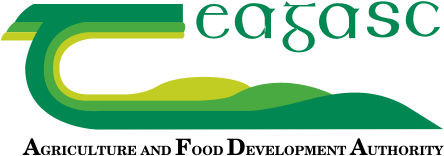
Farm Safety for May
Farm Safety for May 06 May 2025 Type Media Article By Ciara Collins, B&T Drystock Adviser, Teagasc Galway/Clare The month of May is a very active farming month, particularly with machinery work, including spraying, silage harvesting, fertiliser and slurry spreading. The safety of yourself, your family, those working for you, and other road users must be your […]
By By Ciara Collins, B&T Drystock Adviser, Teagasc Galway/Clare

Farm Safety for May
Type Media Article
By Ciara Collins, B&T Drystock Adviser, Teagasc Galway/Clare
The month of May is a very active farming month, particularly with machinery work, including spraying, silage harvesting, fertiliser and slurry spreading. The safety of yourself, your family, those working for you, and other road users must be your highest priority. Both on public roadways and in farmyards, there is a lot of machinery activity, which increases the risk of being knocked down, rolled over, and crushed. On farms, 20 fatal accidents happen annually on average.
Silage Harvesting Season
Safety should be considered throughout the forthcoming silage-harvesting season; the days are long and the opportunity for harvesting silage can be tight. Farmers and contractors may experience increased stress and exhaustion as a result.
Contractors are well aware of how longer hours affect their drivers’ capacity to safely operate machinery. You can contribute to keeping safe during this busy time by keeping your yard tidy, trimming bushes at gates and ensuring that no animals are in sheds when slurry is being agitated.
According to HSA, falling bales are responsible for 5% of workplace fatalities on farms. This silage season, make sure the driver is mindful of any overhead power wires and the ground conditions, including slopes when handling bales.
Inappropriate stacking of bales might also result in accidents. The SMR 2 states that silage bales cannot be stacked more than 2 bales high or stored within 20m of a surface water or water abstraction point unless there are storage facilities in place to collect any potential effluent. See the Explanatory Handbook for Conditionality Requirements for additional details.
Slurry Spreading
Slurry spreading comes after the harvesting of silage. Kindly follow the Slurry Code:
- Agitate the slurry on a breezy day rather than agitating it on a calm day.
- When handling slurry, keep children away from the area at all times.
- Before beginning to mix the slurry, remove any animals from the sheds.
- Ensure dogs are kept away for the duration of agitation.
- Open all doors and outlets to provide a draught.
- When agitation occurs, avoid standing over slats or close to tank access points.
- Avoid vigorous agitation in confined spaces.
- Start the pump or mixer and then leave the building as long as possible—at least 30 minutes or longer, depending on the size of the tank.
- If you must re-enter the building to move the pump or change the direction of the pump, leave as soon as this is done—do not return for at least another 30 minutes or longer, depending on the size of the tank.
- Never enter the slurry tank unless you are wearing appropriate breathing apparatus and/or a harness attached to a lifeline controlled by at least two other adults positioned outside of the area.
- Because slurry gases are extremely flammable, stay away from smoking and using naked flames. Gases can accumulate and stay in partially emptied tanks above the slurry.
Let your family know that there is agitation occurring.
Breeding
On many farms, May is also one of the most important breeding months. According to data from the HSA, bulls were responsible for more than 16% of livestock-related fatalities on Irish farms during the previous 10 years. Activities involving animals must be carefully planned and organised, and facilities for managing livestock must be available, suitable, well-designed, and maintained.
Even though an animal may appear “quiet,” caution must be exercised because all animals can be unpredictable. Prior to performing any task with animals, it is crucial to give it some thought. To prevent dangerous situations, plan the task and complete the essential preparations. Preparation and planning will help to prevent high-risk activities, secure handling equipment, and better control animal behaviour. Always keep a physical barrier between you and the cow, prepare an escape route from fields and enclosures, and cull dangerous animals.
For more information on farm safety, visit:
TAMS 3 Farm Safety Capital Investment Scheme
The Targeted Agricultural Modernisation Schemes (TAMS III) grants offer 60% grant aid for safety equipment through the Farm Safety Capital Investment Scheme (FSCIS). Tranche 8 is now open for applications and will close 6th June 2025. The minimum amount of eligible investment is €2000.
This scheme provides incentives to invest in equipment that would help improve safety on the farm. Grant aid under the scheme will be paid at a rate of 60% up to a maximum of €90,000 for individuals and €160 000 for registered farm partnerships.
Talk to your advisor about the possibilities for your farm under this scheme and stay safe during this busy time ahead. See a list of eligible items here.
